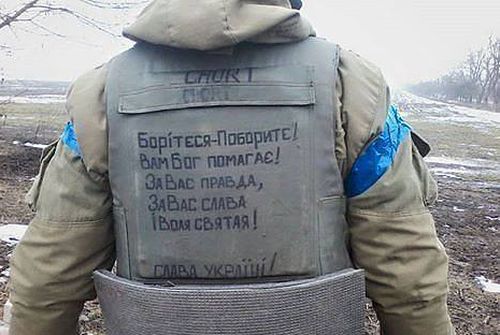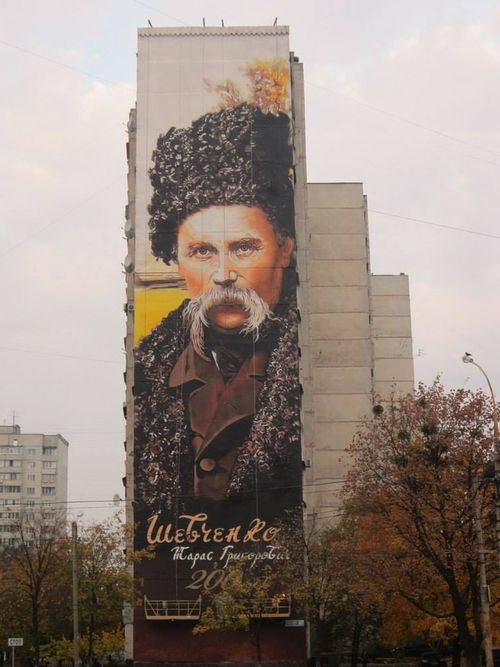Shevchenko in modern “wrapping”
The Day reviews the most interesting initiatives about the Ukrainian poet, artist, and public figure
Taras Shevchenko may be greatly diverse. There are, for example, some dyed-in-the-wool traditions of celebrating Shevchenko’s anniversaries, which resemble pompous events in Soviet “houses of culture.” For instance, the Ministry of Culture is organizing a radio marathon, “Shevchenko Mobilizes,” which starts on March 9, the poet’s birthday. Just look at the style and the placement of priority positions in the list of participants: “From 6:00 until 24:00 Shevchenko’s oeuvres will be recited by officials, politicians, figures of science and culture, volunteers, representatives of the public, officers and soldiers of the Armed Forces of Ukraine, the National Guard of Ukraine, the Border Security Forced, and policemen, who are engaged in restoring territorial integrity of Ukraine in the counter-terrorism operation zone.” But we also know a different Shevchenko whose verses Serhii Nigoyan recited on the Maidan and our soldiers write on their bulletproof jackets now. Everybody knows the picture of an old Bard with an astrakhan hat on, but very few have seen a rare avant-garde placard to the film Taras Shevchenko (1926) made by the undeservedly forgotten Ukrainian placard artist Kostiantyn Bolotov.
Shevchenko is, above all, a people’s poet and rebel. This is why his oeuvres fit in so well with today’s idea of the history of Ukrainian revolutions and liberation and sound so modern. The Ukrainian music band Apocrypha has issued a new album, Eternal Shevchenko, in the style of rap. This is not the first time the band uses Ukrainian classic works – the musicians earlier recorded the disc Porepani virshi with texts by Taras Shevchenko, Vasyl Stus, Vasyl Symonenko, Ivan Franko, and Lina Kostenko. For classic poems can not only and so much be recited at Writers League soirees – theirs texts are true to life, which young people appreciate.

“SHEVCHENKO HAS COME BACK AT LAST – NOT TO FORMAL EVENTS OR A COCKTAIL PARTY IN THE MUSEUM, BUT TO THOSE WHO REALLY NEED HIM,” LARYSA IVSHYNA WROTE ABOUT THE PICTURE ON HER FACEBOOK PAGE / Photo from Gia BERAIA’s Facebook page
In the past year, Shevchenko has been given a new image in street art. For example, the Kharkiv-based art group Kailas-V painted a gigantic portrait of Shevchenko on a 17-storied residential building to mark his 200th birth anniversary. This mural’s area is more than 500 sq. m. The group leader Yana Vovk said at the time that the three artists who worked on the graffiti were even ready to exceed human capabilities to do the job. They managed to do this. Meanwhile, in Kyiv the street artist Jerzy Konopie popularized Shevchenko’s oeuvre in a rather offbeat and innovative form. He QR-coded the poet’s 14 quotations and put up 888 sheets with them on notice boards throughout Kyiv. “A guy younger than me came up and asked what it was. I scanned the code with my cell phone and let him read the quotation. He liked the idea very much. QR codes are part of modern-day life and are customary in a consumer society. So, what I have is Shevchenko in modern wrapping,” Internet resource Gazeta.ua quotes him as saying about his project.
This grass-rooted, rebellious, symbolic, historic, and even “Maidan-style” Shevchenko does not at all fit in with the launching of Sonia Koshkina’s book Maidan at the National Taras Shevchenko Museum. Many media people wrote that Sonia “did not understand what the Maidan was all about.” What was the bloody liberation struggle reduced to? To glamour and a high-life event. Were the people dying to have an anniversary of their death used as an occasion for a cocktail party for old-regime politicians against whose system they fought?
“My vision of the situation is as follows: it is good that the book was launched at the Shevchenko Museum, but if they wanted to have a cocktail party to boot, there were a lot of other places for this,” says Anatolii KYCHYNSKY, National Taras Shevchenko Prize winner. “At any rate, one must understand the role of the figure after whom the museum is named and the situation in this country. There are some bounds that must not be overstepped. But they were in this case. This is about our true attitude to values. People sometimes fail to see nuances and what seems to be a simple thing. And it is too bad that society does not notice and ‘swallows’ this hypocrisy. We often allow ourselves to be above and not to attach importance to this. Patriotism is the word of the day now, but let us not forget what it begins with – it begins with being respectful of our symbols. And who but Shevchenko was and still is this kind of symbol for us?”

“SHEVCHENKO’S HEIGHT”: IN KHARKIV, ARTISTS PAINTED THE POET’S PORTRAIT ON A 17-STORIED BUILDING
“In my opinion, the debate on Sonia Koshkina’s book launching focuses on the wrong points,” says Lesia HASYDZHAK, editor of the Museum Space web portal. “A cocktail party crowns any book launching. There are even closed-door corporate parties in a refined noble interior. A party or a glass of wine is a boundary between a market ploy to attract guests and a tradition, for the bohemia has always sought the art truth in wine. Museums in many countries uphold this tradition, and all debates on this stopped long ago. I think the problem of this concrete situation is different. Is it right to drink wine when the war in the east continues? Were the guests aware of the place they were in? Did any of the guests, who consider themselves the political elite, wish to buy a ticket and climb one floor up to examine the National Taras Shevchenko Museum’s exposition which was updated and enlarged in the year of the Bard’s anniversary? Did they show a wish to put some money into the donations box to support the museum?”
I have another story about the “Maidan-style” Shevchenko. On February 20 I watched stream reports from downtown Kyiv on some informational TV channels. One of the channels was showing street camera footage. I saw riot policemen frog-marching a blood-stained guy. A woman walked behind them. When the cops stopped, she could come up closely and hug the boy. This was his last hope. They would never break the embrace, no matter how hard the policemen tried to disengage them. Then an old man with a walking cane slowly approached them. The woman and the old man finally “won” the boy over, and the three of them began to slowly walk away from the “regime guardians.” I then suddenly saw a poster of young Shevchenko which the whole city was full of in connection with his 200th anniversary. I feared very much that the three might be shot in the back. There was nobody around. Only a shot-down Shevchenko…






